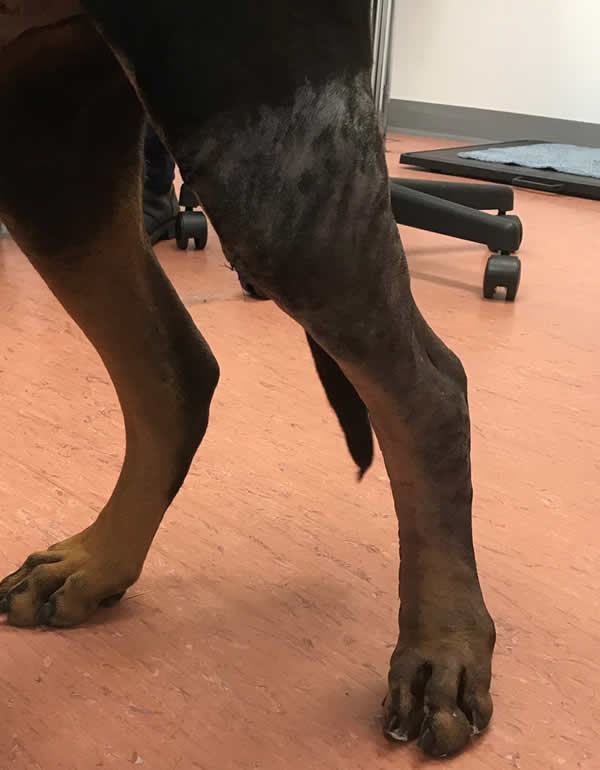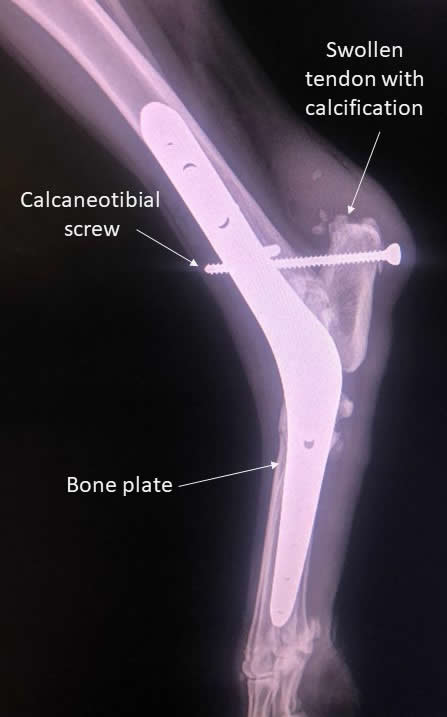An 8 ½ year old, 47kg Dobermann with a major orthopaedic problem can be quite a daunting prospect. Pedro is a gentle giant but sadly his Achilles tendon was degenerating to the point where he couldn’t support himself on his left hind leg.
Just like humans, dogs have an Achilles tendon which attaches the calf muscles to the point of the hock (the bone point that sticks out backwards up from the foot). This is the equivalent of our heel but in dogs the hock is raised up and they walk just on their toes.
The tendon was torn, painful, inflamed and swollen. In theory you can repair these surgically, but the risk of failure is quite high. After discussion with Pedro’s owner and advice from some specialists we opted to permanently fuse Pedro’s hock joint so it would support his weight whilst walking.

This surgery is called a pan-tarsal arthrodesis and involves opening up the main hock joint, removing the smooth joint (articular) cartilage, inserting some bone graft tissue from another bone site, then screwing a carefully contoured, heavy duty, stainless steel bone plate across the joint to fix it into a comfortable position.
Over time the bone graft will produce new bone which will help the bones of the joint fuse together and become like one bone. If successful, this will provide a strong, permanent fusion which will support his weight whilst running; the damaged Achilles tendon will be obsolete.
Because the hock will be fused, it won’t be able to bend when he sits but instead, he’ll have to hold it out to the side. This is a big improvement on his current situation where he can’t take any weight on the leg at all.
Kyra and I embarked on the surgery and methodically went through the stages of the operation. After about 6 hours the plate with its 10 screws was in place along with a 70mm long calcaneotibial screw to provide extra support for the repair.
The x-ray images show the bone plate & screws in position. In the side-on view you can also see the swollen Achilles tendon which has calcified areas from the degeneration.
Pedro has subsequently been back for his first check up 3 days post op. His wound looks great and he is taking weight well on his fused hock. There are still potential risks for Pedro including implant failure or infection but so far so good, and we hope that he will continue to heal well and remain comfortable. If all goes well, in 3-4 months’ time the joint should be permanently fused, and Pedro will be fine to run around as he used to.
Enjoy your pets
Jason Williams
Bicester Vets




Building Plans for 2024
We have also commenced a major construction project externally which will add significantly to the facilities we can offer to our patients
Welcome to our NEW Reception & Waiting Room
Our aim was to make a beautiful space which we can all be proud of, but essentially, we needed to retain practicality and ergonomic design
Hip Hip Hooray for Ava
Ava is now seven months on from her surgery. She is very lively and is behaving like a puppy again!








